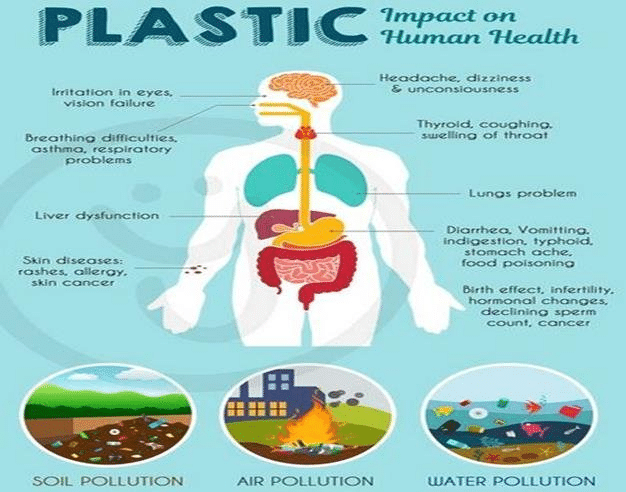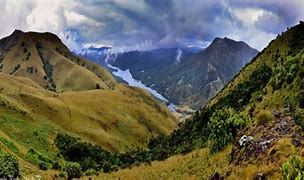UPSC Daily Current Affairs- 31st December 2023 | Current Affairs & Hindu Analysis: Daily, Weekly & Monthly PDF Download
GS-I
Indian National Congress (INC): From Foundation to Present Day
Subject: Modern History

Why in News?
On December 28, 1885, the Indian National Congress (INC) was established, marking the beginning of a significant journey in Indian politics.
- The INC’s journey from influencing British policy to leading India’s nationalist movement, dominating post-independence politics, and its current decline offers a rich political narrative.
Indian National Congress: Inception in 1885
- Founding by AO Hume: Allan Octavian Hume, an English bureaucrat, founded the INC to advocate for greater self-governance in India.
- First Session: The inaugural session in Bombay saw 72 reformers, journalists, and lawyers unite, aiming not for independence but to influence British policies favorably for Indians.
- Safety Valve Theory: The INC initially served as a platform for Indians to express grievances, seeking to unify diverse population segments and regenerate the nation across various dimensions.
Politics of Petitions
- Early Challenges: The Congress faced criticism from both the British and Indians; the former for disrupting the status quo and the latter for its passive resistance approach.
- Composition and Critique: Dominated by educated, upper-class individuals, the INC was often seen as too moderate and not sufficiently representative of all Indians.
- Internal Divisions: By 1906, ideological differences led to a split between the moderates (Gopal Krishna Gokhale, Surendranath Banerjea) and the extremists (Bal Gangadhar Tilak), particularly over responses to the Bengal Partition.
Leadership under Mahatma Gandhi
- Reunification and Transformation: The INC, under Gandhi’s influence from 1915, transformed into a mass movement, focusing on social issues like caste discrimination and poverty.
- Diverse Membership: Despite its Hindu upper-caste dominance, the party included members from various ethnic and religious backgrounds.
- Purna Swaraj Declaration: At the 1929 Lahore session, the INC, under Jawaharlal Nehru’s presidency, committed to complete independence, a goal achieved in 1947 but marred by Partition.
Dominance in Post-Independence India
- Electoral Success: The INC’s legacy and organizational strength led to victories in the first six general elections.
- Policy Direction: Under Nehru, the party promoted secularism, socialist economics, and non-aligned foreign policy.
- Internal Power Struggles: Post-Nehru, internal conflicts emerged, notably between Indira Gandhi and the party’s old guard, leading to a split into Congress (R) and Congress (O).
Onset of Decline
- Electoral Setbacks: The Emergency period (1975-77) led to the INC’s first national electoral defeat in 1977.
- Fluctuating Fortunes: While it regained power, the 1989 loss marked the end of its dominance, with the Bharatiya Janata Party (BJP) emerging as a strong alternative.
- Recent Struggles: The INC’s significant reduction in parliamentary strength in the 2014 and 2016 elections underscores its ongoing decline.
Source: Indian Express
Salton Sea
Subject: World Geography
Why in News?
The U.S. Department of Energy recently discovered the world’s largest Lithium reserve beneath California’s Salton Sea.
- It is a shallow, saline lake located in the lower Colorado Desert, southern California, USA.
- It is a geological depression tucked between mountain ranges and lying below sea level.
- Formation:
- The area that is now the lake was formerly a salt-covered sink or depression (a remnant of prehistoric Lake Cahuilla) about 280 feet (85 metres) below sea level until 1905–06, when diversion controls on the Colorado River broke a few miles below the California-Mexico border and floodwaters rushed northward, filling the depression.
- Subsequent deepening of the sink was stopped in 1907, when a line of protective levees was built.
- It is currently 228 feet below sea level.
- It covers an area of 970 square km and includes 130 miles of shoreline.
- It has an average depth of 29.9 feet and, at its deepest, 51 feet.
- Its salinity (some 45 parts per thousand) far exceeds that of seawater.
- The Salton Sea is an important stopping point for migratory waterfowl and serves as critical habitat for birds moving south to Mexico and Central America.
- It is a soft, silvery-white metal that heads group 1, the alkali metals group, of the periodic table of the elements.
- Features:
- It has the lowest density of all metals.
- It is the lightest of the solid elements.
- It reacts vigorously with water.
- It has a body-centered cubic crystal structure.
- Occurrence:
- Lithium does not occur as a metal in nature but is found combined in small amounts in igneous rocks.
- Lithium is found in brine deposits and as salts in mineral springs.
- Its concentration in seawater is 0.1 parts per million (ppm).
- Uses:
- Lithium is important in rechargeable batteries for mobile phones, laptops, digital cameras, and electric vehicles.
- It is also used in some non-rechargeable batteries for things like heart pacemakers, toys, and clocks.
- Lithium metal is made into alloys with aluminium and magnesium, improving their strength and making them lighter.
Source: The Hindu
GS-II
United Nations Relief and Works Agency for Palestinian Refugees in the Near East (UNRWA)
Subject: International Relations

Why in News?
India recently announced that it has provided US $ 2.5 million to the United Nations Relief and Works Agency for Palestine Refugees in the Near East or the UNRWA for the welfare of Palestinian refugees.
- It is a UN agency that supports the relief and human development of Palestinian refugees.
- Establishment:
- Following the 1948 Arab-Israeli war, UNRWA was established by United Nations General Assembly (UNGA) Resolution 302 (IV) of 8 December, 1949, to carry out direct relief and work programmes for Palestine refugees.
- The agency began operations on 1 May, 1950.
- In the absence of a solution to the Palestine refugee problem, the UNGA Assembly has repeatedly renewed UNRWA's mandate, most recently extending it until 30 June, 2023.
- It is one of the largest United Nations programmes, with a population of approximately 5 million registered Palestine refugees under its mandate and over 30,000 staff.
- Fields of operations: It provides services in its five fields of operations: Jordan, Lebanon, Syria, the Gaza Strip and the West Bank, including the East of Jerusalem.
- UNRWA is unique in that it delivers services directly to its beneficiaries.
- Services provided: It encompasses education, health care, relief and social services, camp infrastructure and improvement, microfinance, and emergency assistance, including in times of armed conflict.
- Funding:
- It is funded almost entirely by voluntary contributions from UN Member States.
- It also receives some funding from the Regular Budget of the United Nations, which is used mostly for international staffing costs.
- It reports only to the UNGA.
- Headquarters: It was originally headquartered in Beirut, Lebanon, but was moved to Vienna, Austria, in 1978. In 1996, the General Assembly moved the agency to the Gaza Strip to demonstrate the Assembly’s commitment to the Arab-Israeli peace process.
- Its chief officer, the commissioner-general, the only leader of a UN agency to report directly to the General Assembly, is appointed by the UN secretary-general with the approval of an Advisory Commission.
Source: The Hindu
Press and Registration of Periodicals Bill, 2023: Key Features and Changes
Subject: Polity and Governance

Why in News?
The Press and Registration of Periodicals Bill, 2023, faced opposition uproar but was passed in the Rajya Sabha on August 3. Subsequently, it was approved in the Lok Sabha on December 21, marking its legislative passage.
- Repealing the 1867 Act: The Bill aims to repeal the Press and Registration of Books Act, 1867, modernizing the regulatory framework for periodicals.
- Key Provisions: It includes a notable clause preventing individuals convicted of terrorism or acting against state security from publishing periodicals.
- Rationale for Introduction: The Bill focuses on easing business processes for publishers, removing procedural hurdles, and reducing the administrative burden of declarations and filings.
- Exclusion of Books: Unlike the 1867 Act, the 2023 Bill excludes books from its purview, as they fall under the HRD Ministry’s jurisdiction.
- Penalty Structure: The new Bill replaces imprisonment with fines for certain violations and introduces an appellate mechanism led by the Press Council of India Chairman.
- Shift in Administrative Power: Power is transferred from the District Magistrate to the newly established Press Registrar General, centralizing the registration and regulation process.
- Simplification of Procedures: The Bill simplifies the declaration process, eliminating the need for DM involvement and allowing online intimations for printing presses.
- Simultaneous Processing: It enables concurrent processing of title allotment and registration applications, streamlining the procedure.
- Time-Bound Responses: The specified authority must provide feedback within 60 days, expediting the registration process.
- Restriction on Convicted Individuals: The Bill bars individuals convicted of terrorist acts or unlawful activities, as defined under the Unlawful Activities (Prevention) Act, 1967, from publishing periodicals.
- Security Concerns: This provision addresses concerns about the misuse of periodicals for activities threatening national security or sovereignty.
- Modernizing Media Regulation: The Press and Registration of Periodicals Bill, 2023, represents a significant overhaul of India’s media regulatory framework, aligning it with contemporary needs.
- Balancing Ease of Business and Security: While the Bill aims to facilitate easier operations for publishers, it also incorporates measures to safeguard against security threats.
- Potential for Debate and Discussion: The Bill’s passage, amidst opposition concerns, suggests ongoing debates about media freedom, security, and regulatory oversight in India’s evolving democratic landscape.
Source: AIR
GS-III
Understanding the Psychology and Impact of Plastic Consumption
Subject: Environment and Ecology

Why in News?
Plastic, with its beneficial properties like durability, has become a ubiquitous part of modern life.
- Environmental Impact: Approximately 50% of plastic is used only once before being discarded, contributing to significant environmental issues, including ocean pollution.
Psychological Aspects of Plastic Use
- Consumer Behavior Influence: The omnipresence of plastic shapes consumer choices and behaviors, influenced by marketing strategies, packaging design, and product aesthetics.
- Packaging and Brand Perception: Packaging plays a crucial role in plastic use, with visual appeal and brand image significantly impacting consumer preferences.
- Color Psychology in Packaging: The use of color in packaging design evokes specific emotions and expectations, influencing purchasing decisions.
Convenience Factor and Limited Alternatives
- Role of Convenience: Plastic packaging’s ability to keep products fresh and hygienic has been a key driver of its market dominance.
- Lack of Economical Alternatives: The absence of affordable alternatives for food packaging often leaves consumers with no choice but to opt for plastic-wrapped items.
Pro-Environmental Behavior (PEB) and Plastic Use
- Understanding PEB: Limiting plastic use and purchase is an example of pro-environmental behavior, influenced by awareness, knowledge, and values.
- Factors Influencing PEB: Concern about plastic, knowledge of its effects, and the perceived commitment of others to address its impact play roles in shaping PEB.
Market Trends and Social Influences
- Impulsive Buying and Social Media: The growth of social media and peer pressure have been linked to increased compulsive buying behaviors, often leading to increased plastic consumption.
- Influence of Social Norms: Social norms promoting consumption have led to an increase in plastic use, despite its environmental costs.
Stages of Behavioral Readiness in Plastic Consumption
Five Stages of Readiness include-
- Pre-contemplation,
- Contemplation,
- Preparation,
- Action, and
- Maintenance.
Role of Storytelling and Marketing in Plastic Awareness
- Emotional Engagement: Storytelling in marketing can emotionally engage customers with the lifecycle of plastic items, enhancing environmental awareness.
- Positive and Negative Impacts: Marketing power can influence consumer behavior both positively and negatively in the context of plastic use.
- Objective vs. Subjective Knowledge: Understanding the specifics of an issue (objective knowledge) versus personal belief or awareness (subjective knowledge) influences behavior.
- Barriers to Action: Lack of personal connection, gradual environmental impact, moral disengagement, and immediacy issues are barriers to taking action against plastic pollution.
Way forward
- Role of Education and Design: Knowledge is crucial, but behavioural change also depends on product design that encourages environmentally friendly choices.
- Supplier and Retailer Responsibility: Minimizing packaging, using recyclable materials, and clear recycling instructions are key steps.
- Policy Initiatives: Policies raising awareness of plastic pollution’s effects can facilitate a sustainability-focused behavioural shift.
- Emergence of Sustainable Brands: As consumers increasingly look to brands for sustainable options, there is a growing market for environmentally conscious products.
Conclusion
- Critical Role of Habit Change: Altering consumer habits is essential for environmental protection, requiring a multifaceted approach involving education, policy, and market innovation.
- Sources: Insights drawn from the Sustainability and Consumer Behaviour Report 2022 by Deloitte United Kingdom and research by Mittali Tyagi, PhD Scholar at Manav Rachna International Institute of Research and Studies.
Source: The Hindu
Mukurthi National Park
Subject: Environment and Ecology

Why in News?
Recently, the Tamil Nadu’s Forest Department has begun an investigation of a private helicopter’s unauthorised flyby over Mukurthi National Park.
- It is located in the western corner of Nilgiris Plateau in the state of Tamil Nadu.
- It is a part of the Nilgiri Biosphere Reserve.
- It is sandwiched between the Mudumalai National Park and the Silent Valley National Park.
- It was established with the prime motive of conserving its keystone species – the Nilgiri Tahr.
- It is a UNESCO World Heritage Site and was formerly known as Nilgiri Tahr National Park.
- It is also home to Mukurthi Peak (2,554m), the fourth highest peak in the Nilgiri Hills.
- Rivers: Pykara and Kundah rivers flow through the park along with several perennial streams that originate in the park and drain into the Bhavani Puzha.
- Vegetation:
- The majority of the landscape in the reserve is covered with shrubs and mountainous grasslands.
- The areas which are at an elevation and experience high rainfall are covered with sholas and lush green tropical grasslands.
- Flora:
- Sholas, Gaultheria fragrantissima, Helichrysum and Berberis tinctoria, Rhododendrons, Cinnamon, Mahonia, Satyrium, Raspberries etc.
- Fauna: Nilgiri tahr, Indian elephants, Nilgiri Langur, Bengal tiger and bonnet macaque etc.
Source: The Hindu
|
38 videos|5288 docs|1117 tests
|





















